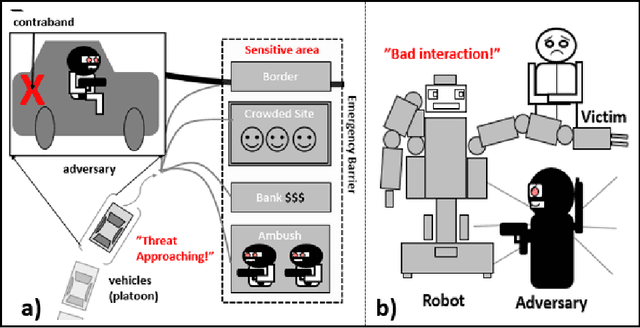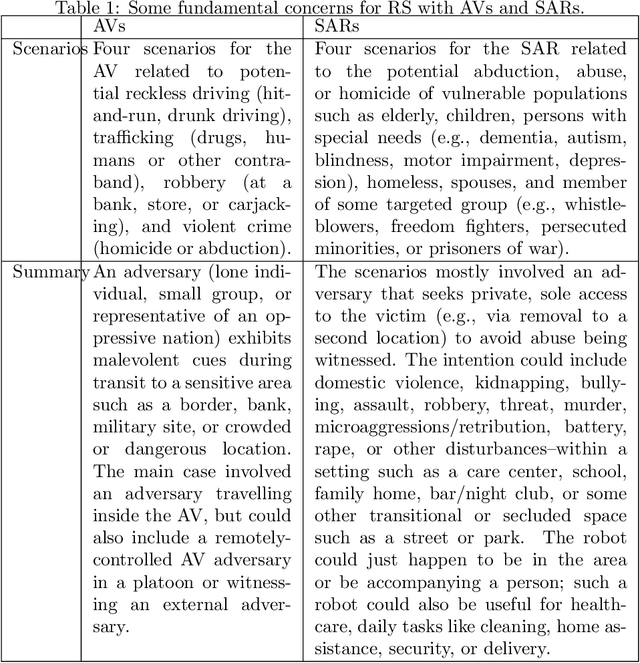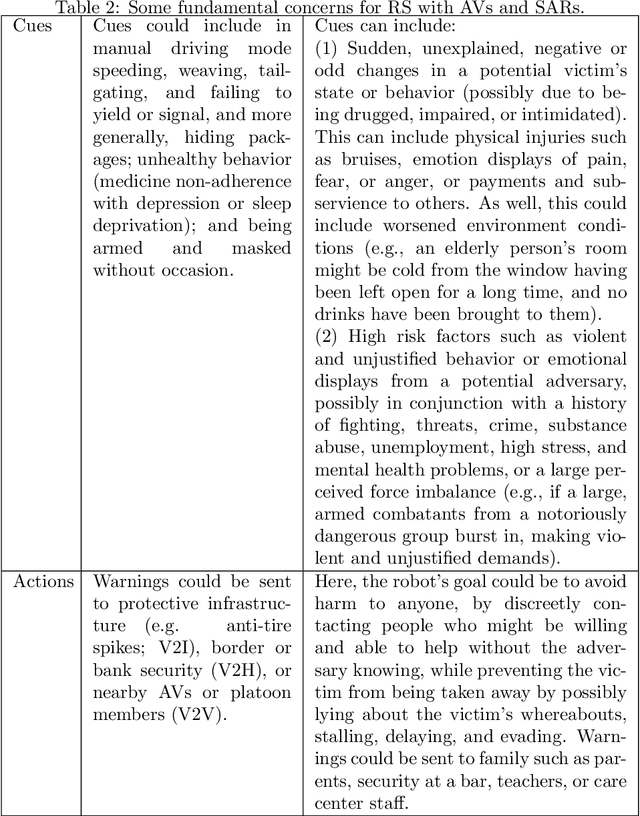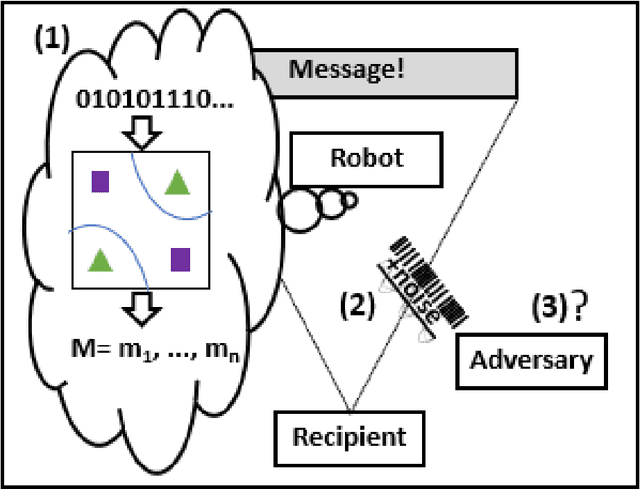Alexey Vinel
VALISENS: A Validated Innovative Multi-Sensor System for Cooperative Automated Driving
May 11, 2025Abstract:Perception is a core capability of automated vehicles and has been significantly advanced through modern sensor technologies and artificial intelligence. However, perception systems still face challenges in complex real-world scenarios. To improve robustness against various external factors, multi-sensor fusion techniques are essential, combining the strengths of different sensor modalities. With recent developments in Vehicle-to-Everything (V2X communication, sensor fusion can now extend beyond a single vehicle to a cooperative multi-agent system involving Connected Automated Vehicle (CAV) and intelligent infrastructure. This paper presents VALISENS, an innovative multi-sensor system distributed across multiple agents. It integrates onboard and roadside LiDARs, radars, thermal cameras, and RGB cameras to enhance situational awareness and support cooperative automated driving. The thermal camera adds critical redundancy for perceiving Vulnerable Road User (VRU), while fusion with roadside sensors mitigates visual occlusions and extends the perception range beyond the limits of individual vehicles. We introduce the corresponding perception module built on this sensor system, which includes object detection, tracking, motion forecasting, and high-level data fusion. The proposed system demonstrates the potential of cooperative perception in real-world test environments and lays the groundwork for future Cooperative Intelligent Transport Systems (C-ITS) applications.
Systematic Literature Review on Vehicular Collaborative Perception -- A Computer Vision Perspective
Apr 06, 2025Abstract:The effectiveness of autonomous vehicles relies on reliable perception capabilities. Despite significant advancements in artificial intelligence and sensor fusion technologies, current single-vehicle perception systems continue to encounter limitations, notably visual occlusions and limited long-range detection capabilities. Collaborative Perception (CP), enabled by Vehicle-to-Vehicle (V2V) and Vehicle-to-Infrastructure (V2I) communication, has emerged as a promising solution to mitigate these issues and enhance the reliability of autonomous systems. Beyond advancements in communication, the computer vision community is increasingly focusing on improving vehicular perception through collaborative approaches. However, a systematic literature review that thoroughly examines existing work and reduces subjective bias is still lacking. Such a systematic approach helps identify research gaps, recognize common trends across studies, and inform future research directions. In response, this study follows the PRISMA 2020 guidelines and includes 106 peer-reviewed articles. These publications are analyzed based on modalities, collaboration schemes, and key perception tasks. Through a comparative analysis, this review illustrates how different methods address practical issues such as pose errors, temporal latency, communication constraints, domain shifts, heterogeneity, and adversarial attacks. Furthermore, it critically examines evaluation methodologies, highlighting a misalignment between current metrics and CP's fundamental objectives. By delving into all relevant topics in-depth, this review offers valuable insights into challenges, opportunities, and risks, serving as a reference for advancing research in vehicular collaborative perception.
Magic in Human-Robot Interaction (HRI)
Mar 04, 2025Abstract:"Magic" is referred to here and there in the robotics literature, from "magical moments" afforded by a mobile bubble machine, to "spells" intended to entertain and motivate children--but what exactly could this concept mean for designers? Here, we present (1) some theoretical discussion on how magic could inform interaction designs based on reviewing the literature, followed by (2) a practical description of using such ideas to develop a simplified prototype, which received an award in an international robot magic competition. Although this topic can be considered unusual and some negative connotations exist (e.g., unrealistic thinking can be referred to as magical), our results seem to suggest that magic, in the experiential, supernatural, and illusory senses of the term, could be useful to consider in various robot design contexts, also for artifacts like home assistants and autonomous vehicles--thus, inviting further discussion and exploration.
The Components of Collaborative Joint Perception and Prediction -- A Conceptual Framework
Jan 27, 2025



Abstract:Connected Autonomous Vehicles (CAVs) benefit from Vehicle-to-Everything (V2X) communication, which enables the exchange of sensor data to achieve Collaborative Perception (CP). To reduce cumulative errors in perception modules and mitigate the visual occlusion, this paper introduces a new task, Collaborative Joint Perception and Prediction (Co-P&P), and provides a conceptual framework for its implementation to improve motion prediction of surrounding objects, thereby enhancing vehicle awareness in complex traffic scenarios. The framework consists of two decoupled core modules, Collaborative Scene Completion (CSC) and Joint Perception and Prediction (P&P) module, which simplify practical deployment and enhance scalability. Additionally, we outline the challenges in Co-P&P and discuss future directions for this research area.
Towards Cooperative VRUs: Optimal Positioning Sampling for Pedestrian Awareness Messages
Dec 21, 2023Abstract:Road safety is the main motivation for Cooperative Intelligent Transport Systems (C-ITS) in general, and vehicular communications (V2X) technology in particular. The V2X-based Vulnerable Road User (VRU) protection is an approach that relies on the persistent broadcasting of "beacon" awareness messages by a VRU mobile device. To this end the European Telecommunications Standards Institute (ETSI) has specified the Vulnerable Road User Awareness Message (VAM) as well as the overall ITS-G5 protocol stack enabling a variety of the V2X applications. This article studies how often pedestrians (a type of VRU) should check their position to issue a VAM. To that end, we characterize the rate at which pedestrians generate VAMs leveraging a recognized mobility model, and formulate an optimization problem to minimize the time elapsed between VAMs. We propose an algorithm to solve the problem in 802.11p and assess its accuracy through numerical and simulation campaigns. Results evidence the accuracy of our VAM rate characterization, and evidence that we decrease ETSI positioning sampling rate by more than 30%. On top, our solution decreases the time between VAMs, and increases the packet delivery ratio. In other words, our approach increases the pedestrians safety while reducing the battery consumption of mobile devices.
"Robot Steganography"?: Opportunities and Challenges
Aug 02, 2021



Abstract:Robots are being designed to communicate with people in various public and domestic venues in a helpful, discreet way. Here, we use a speculative approach to shine light on a new concept of robot steganography (RS), that a robot could seek to help vulnerable populations by discreetly warning of potential threats. We first identify some potentially useful scenarios for RS related to safety and security -- concerns that are estimated to cost the world trillions of dollars each year -- with a focus on two kinds of robots, an autonomous vehicle (AV) and a socially assistive humanoid robot (SAR). Next, we propose that existing, powerful, computer-based steganography (CS) approaches can be adopted with little effort in new contexts (SARs), while also pointing out potential benefits of human-like steganography (HS): although less efficient and robust than CS, HS represents a currently-unused form of RS that could also be used to avoid requiring computers or detection by more technically advanced adversaries. This analysis also introduces some unique challenges of RS that arise from message generation, indirect perception, and effects of perspective. For this, we explore some related theoretical and practical concerns for selecting carrier signals and generating messages, also making available some code and a video demo. Finally, we report on checking the current feasibility of the RS concept via a simplified user study, confirming that messages can be hidden in a robot's behaviors. The immediate implication is that RS could help to improve people's lives and mitigate some costly problems -- suggesting the usefulness of further discussion, ideation, and consideration by designers.
 Add to Chrome
Add to Chrome Add to Firefox
Add to Firefox Add to Edge
Add to Edge